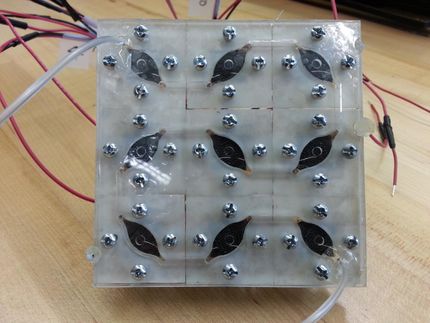Novel testing device for detecting toxic blue-green algae
Advertisement
VTT Technical Research Centre of Finland has developed a fast and affordable testing device for detecting the presence of toxic blue-green algae in water. There is currently no fast, affordable and user-friendly way for consumers to check water quality themselves.
The blue-green algae testing kit developed by VTT and the University of Helsinki is like a miniature laboratory. The device is the size of a thermometer, and it contains antibodies that react to any toxic bacteria found in a water sample. The test reveals in minutes whether the water sample contains toxic blue-green algae.
Thanks to the new testing device, consumers will soon be able to check themselves whether water is safe for swimming. At the moment, information on blue-green algal blooms in water is mostly based on visual inspections. However, visual inspections alone are not capable of determining whether an algal bloom is toxic. Until now, the toxicity of algae has generally had to be tested in a laboratory. For example, only approximately half of blue-green algal blooms in lakes are toxic and harmful to humans and animals. The new testing kit provides a fast and reliable means of determining whether a blue-green algal bloom is toxic.
Blue-green algae, also known as cyanobacteria, favour eutrophic and warm water. Cyanobacteria can be found in almost every terrestrial and aquatic habitat - oceans, fresh water, damp soil, temporarily moistened rocks in deserts, and even Antarctic rocks. Every year, they form extensive blooms e.g. in the Baltic Sea and other waters. The prevalence of algae each summer depends on factors such as weather and water nutrient levels. The first blue-green algal blooms begin to form when the surface of sea water reaches 15 degrees.
The testing kit for detecting toxic blue-green algae is in the process of being commercialised. The kits could be on sale within 2–3 years.
Most read news
Organizations
Other news from the department science

Get the chemical industry in your inbox
By submitting this form you agree that LUMITOS AG will send you the newsletter(s) selected above by email. Your data will not be passed on to third parties. Your data will be stored and processed in accordance with our data protection regulations. LUMITOS may contact you by email for the purpose of advertising or market and opinion surveys. You can revoke your consent at any time without giving reasons to LUMITOS AG, Ernst-Augustin-Str. 2, 12489 Berlin, Germany or by e-mail at revoke@lumitos.com with effect for the future. In addition, each email contains a link to unsubscribe from the corresponding newsletter.





























































